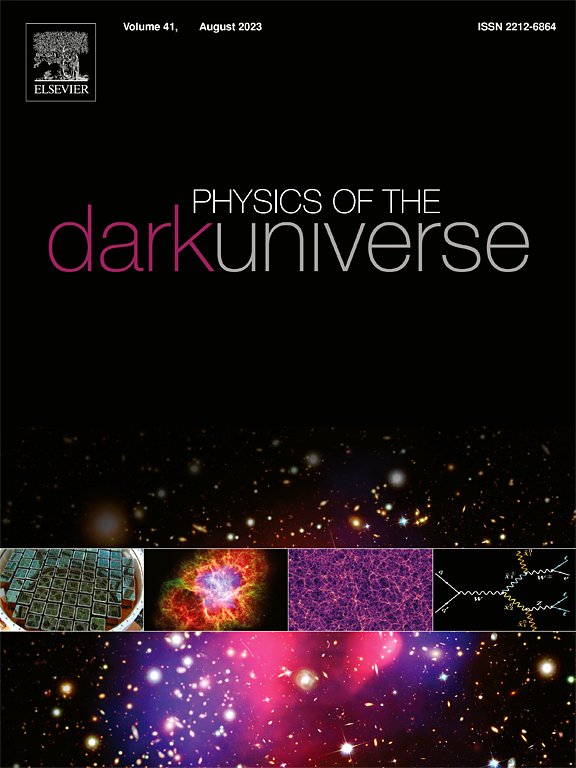被弦流体包围的巴丁薄壳虫洞
IF 6.4
2区 物理与天体物理
Q1 ASTRONOMY & ASTROPHYSICS
引用次数: 0
摘要
本研究在非线性电动力学的框架下,研究了由两种相同形式的Bardeen-AdS黑洞胶合而成的薄壳虫洞的结构和稳定性。采用剪切-粘贴法和Israel-Darmois形式,解析导出了表面应力-能分量,并推导出相应的控制虫孔喉部动力学的有效势。为了评估线性径向扰动下的稳定性,我们分析了势的二阶导数,并推导了三种不同物质模型的状态参数方程的精确表达式:正压、幻像变量和Chaplygin变量状态方程。插入这些表达式是为了获得物理一致性和约束驱动的稳定性条件。结果表明,虫洞结构的稳定性对黑洞参数高度敏感。我们发现,增加电荷显著增强了稳定区,而适度的β≈2值产生了最佳的稳定性。在三种状态方程模型中,Chaplygin变量状态方程提供了最鲁棒和扩展的稳定构型,特别是对于径向依赖参数n的小值,在保持最小外来物质平衡方面优于正压和幻影模型。本文章由计算机程序翻译,如有差异,请以英文原文为准。
Bardeen thin-shell wormholes surrounded by fluid of strings
This study investigates the construction and stability of thin-shell wormholes formed by gluing two identical forms of Bardeen-AdS black holes, surrounded by a fluid of strings, within the framework of nonlinear electrodynamics. Using the cut-and-paste method and the Israel-Darmois formalism, we analytically derive the surface stress–energy components and formulate the corresponding effective potential governing the dynamics of the wormhole throat. To assess stability under linear radial perturbations, we analyze the second derivative of the potential and derive exact expressions for the equation of state parameters for three different matter models: barotropic, phantomlike variable, and Chaplygin variable equation of state. These expressions are inserted to obtain physically consistent and constraint-driven stability conditions. Our results show that the stability of the wormhole configurations is highly sensitive to the black hole parameters. We find that increasing the charge significantly enhances the stability regions, while moderate values of yield optimal stability. Among the three equation of state models, the Chaplygin variable equation of state offers the most robust and extended stable configurations, particularly for small values of the radial dependence parameter , outperforming the barotropic and phantomlike models in maintaining equilibrium with minimal exotic matter.
求助全文
通过发布文献求助,成功后即可免费获取论文全文。
去求助
来源期刊

Physics of the Dark Universe
ASTRONOMY & ASTROPHYSICS-
CiteScore
9.60
自引率
7.30%
发文量
118
审稿时长
61 days
期刊介绍:
Physics of the Dark Universe is an innovative online-only journal that offers rapid publication of peer-reviewed, original research articles considered of high scientific impact.
The journal is focused on the understanding of Dark Matter, Dark Energy, Early Universe, gravitational waves and neutrinos, covering all theoretical, experimental and phenomenological aspects.
 求助内容:
求助内容: 应助结果提醒方式:
应助结果提醒方式:


